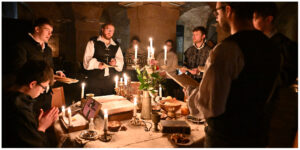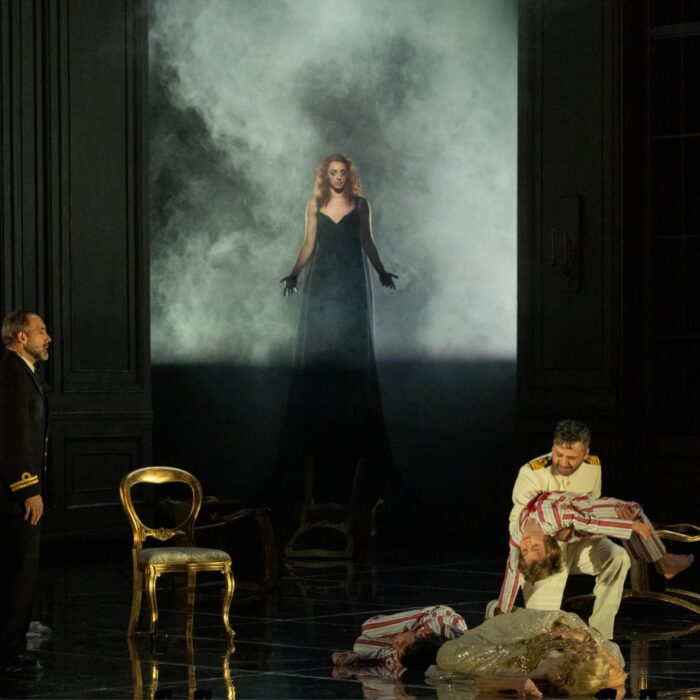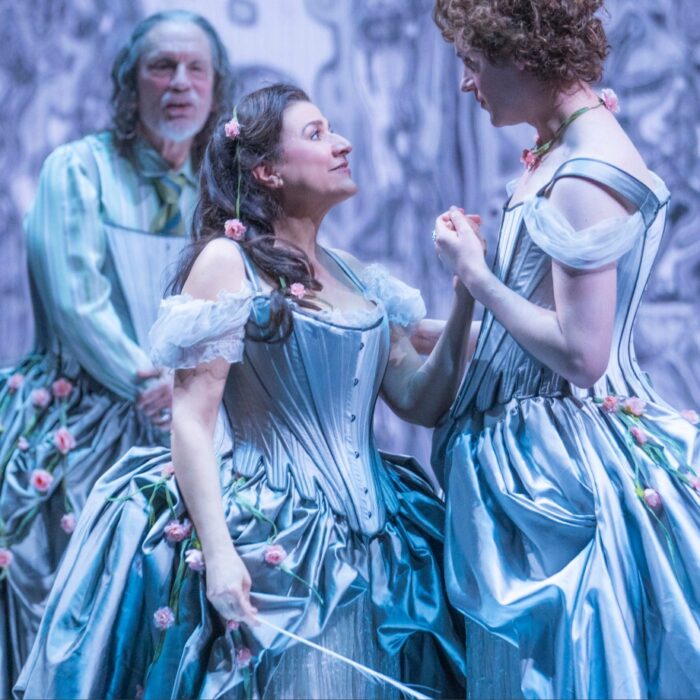
St. Martin-in-the-Fields 2022-23 Review: Secret Byrd
Bill Barclay’s Immersive Take on William Byrd’s Vocal Music Intrigues & Frustrates
By Benjamin PoorePhoto: Mark Allen
A 400th anniversary means a flock of Byrds this year. But few opportunities to hear his music are as intimate or visceral as Bill Barclay’s “Secret Byrd,” an immersive program extremely on trend for classical music right now. The show was devised with the elite vocal group The Gesualdo Six and viol consort Fretwork and received four performances at the church of St Martin-in-the-Fields in London’s West End. From there, it will go on to venues across the UK and the US this year.
The show is built around Byrd’s Mass for five voices, with two keening tenor parts augmenting the usual forces, as well as various madrigals and motets. Byrd, like his mentor Thomas Tallis, was a recusant Catholic during a Protestant crackdown, which stymied his composing career and drove his music and worship into hiding (a story beautifully told by the Marian Consort in their 2020 disc “Singing in Secret”).
A Secret Byrd
A secret Catholic mass is the premise of the show. The five singers sit down to supper and prayer, with music director Owain Park officiating in clergy robes. They move through various stations in the crypt of St Martin’s as the ritual unfolds. Authenticity is laid thick with the space candlelit, the consort wearing garters and hose, and the use of monophonic part books. We were offered a thimble of wine for the communion, and as the singers proceeded through the crypt, they brought out secreted bibles and rosaries. The immersive model borrows from companies like Punchdrunk and OperaUpClose, and we were encouraged to wander freely. However, the pillars and relatively static nature of the action provide little incentive to do so.
The mass is punctuated by exquisite music from Fretwork, whose galliards and pavans provide a soundtrack of hushed dances, underlining the muted character of the celebration. However, their place in the drama is a little less clear, with one sharply-judged exception around which the show’s tension is built. Amid the Agnus Dei, a sudden knocking broke in as they reached the Dona nobis pacem. Candles were extinguished, and the audience was told to get down and hide in the dark. When the coast was clear, the music started again as Fretwork played and countertenor Guy James sang a melting, urgent version of Byrd’s great lament for Tallis—safely secular but a hidden tribute to another recusant Catholic.
The Good and Bad of Authenticity
The whole package is wonderfully camp; much depends on how far you are willing to lean into the historical playacting. But the striving for authenticity makes the piece feel strangely cluttered and gets in the way of the rawness and vulnerability of the scenario. A stripped-back design would intensify the emotional purchase of the music and make the thing feel a little less like a theme park for lovers of polyphony. The props and costumes occlude the atmosphere of desperation and oppression that attends this music, and the ritual quality inherent in the show might be brought out more by something lean and plain. There would be space, too, for contemporary motets if the period setting weren’t taken too literally, providing even more musical and textural variety.
Fine as the Gesualdo Six is, it’s also a pity to have an all-male consort re-enacting this scenario when there is the distinct possibility that Byrd’s music was sung in secret by mixed if small groups of men and women—something not allowed, of course, in the established church. Disappointing, too, was an odd, immersion-shattering decision; patrons had the option of buying a portion of soup with their ticket, which arrived sometime after the Agnus Dei. Strangely, though, it was served by the members of The Gesualdo Six, which seems a curious use of a world-class vocal consort supposedly amid a clandestine act of worship as a persecuted minority.
Byrd Song
On the musical side, the Gesualdo Six sang magnificently in tune; the ensemble was faultless. Their sound is precision-tooled for blend, perfectly rounded, and has the utmost ease and precision. The closing Haec dies was a sensational example of a capella motet singing, with agile changes of color supported by effortless breathing. In a sense, they sang too well. The sound is remarkable but at odds with the theatrical scenario: more grain and bite would’ve felt more in tune with the fearful, portentous mood and secretive gathering. It’s the kind of situation where a little vocal blemish could be a meaningful part of the emotional landscape. Experiencing these voices so close up makes a case for hearing their human frailty —though there is no denying that the exquisite intonation meant that the sculpted dissonances of the work had plenty of impact in themselves.
Despite some missteps in execution, “Secret Byrd” is a novel and engrossing way of bringing Renaissance music to the public and is done with an intimacy and imagination that embeds this music within the world. As concert pieces, they are often beautiful but sometimes strangely detached. It will be interesting to see how the Gesualdo Six and other groups continue to develop this format.


